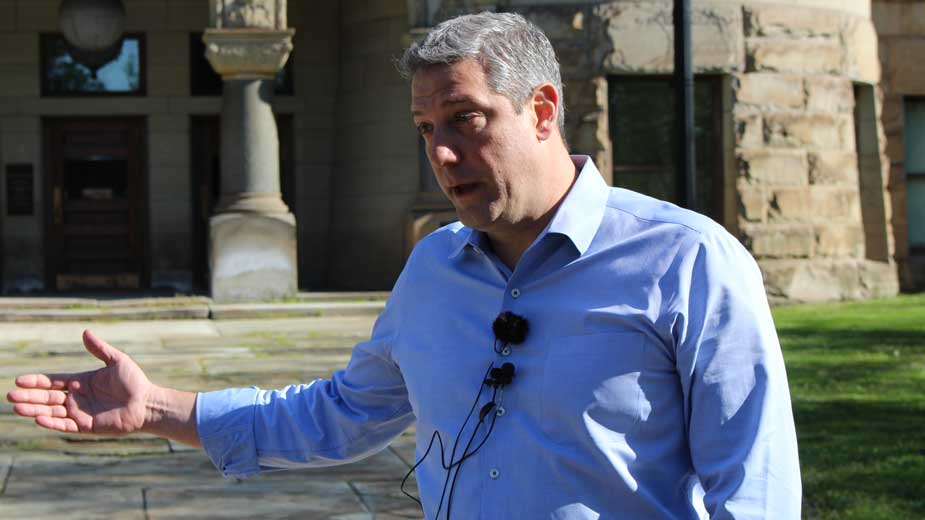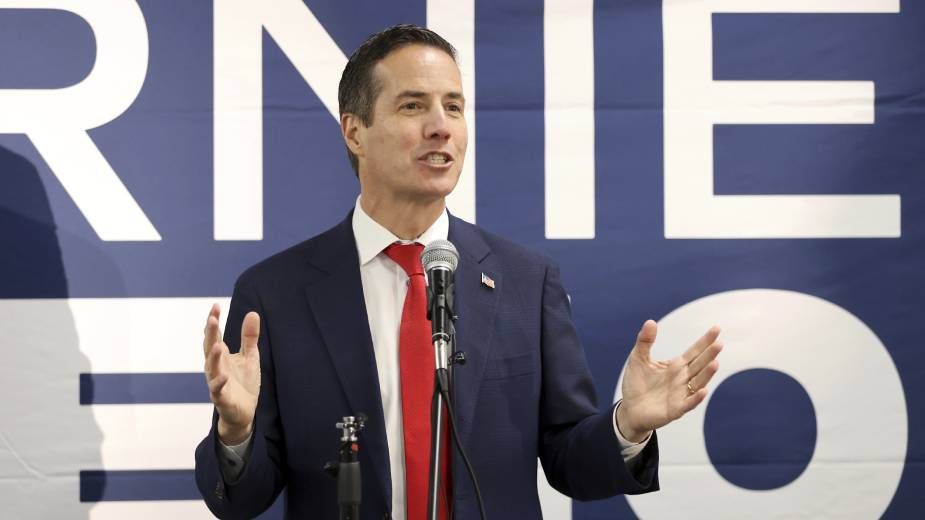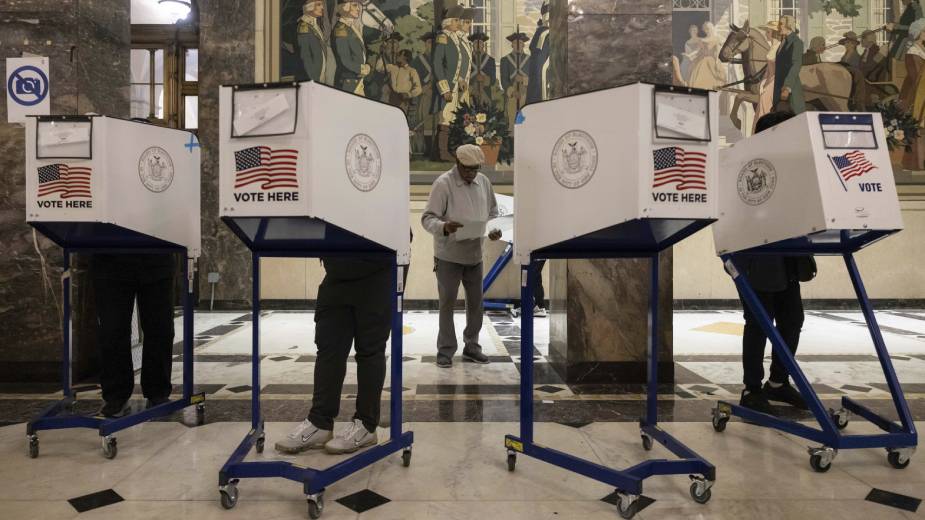Analysts Say Ryan Faces ‘Uphill Climb’ for Senate
YOUNGSTOWN, Ohio – U.S. Rep. Tim Ryan faces an “uphill battle” in his bid for the U.S. Senate as Ohio tilts increasingly Republican, two political analysts agree.
Ryan, D-13 Ohio, announced Monday morning that he would seek the seat now held by U.S. Sen. Rob Portman, a Cincinnati area Republican, who said earlier this year he would not seek re-election in 2022.
The congressman, who was first elected to the U.S. House of Representatives in 2002, has long been considered a potential candidate for a statewide ticket and said after Portman’s announcement he was considering a run.
“We’ve known this was coming,” affirmed Paul Sracic, chairman of Youngstown State University’s department of politics and international relations.
The bid is being driven in part by the fact that Ryan’s district likely is going to be dissolved when the congressional map is redrawn using data from the 2020 U.S. Census, Sracic said. The Census Bureau confirmed Monday that Ohio would lose one of the 16 House seats it now has.
Also, Ryan’s brief campaign to be the 2020 Democratic presidential nominee and his two challenges to House Speaker Nancy Pelosi for leadership of House Democrats indicated he was attempting to increase his name recognition beyond northeastern Ohio, with the expectation that someday he would run for U.S. senator or governor.
“From the perspective of the Democratic Party, his candidacy makes sense,” Sracic said. Given that Democrats over the last two election cycles have lost support among working-class voters in places like northeastern Ohio, selecting candidates who might appeal to those voters to bring them back into the Democratic fold is a way to potentially bring them back to the party.
Even so, winning statewide office in increasingly Republican Ohio – which former President Donald Trump won twice by convincing eight-percentage-point margins – is going to be a challenge for any Democrat.
“I can’t say that any Democrat other than [U.S. Sen.] Sherrod Brown is going to be the favorite for any statewide office in Ohio now,” Sracic said. Additionally, before his successful Senate race in 2006, Brown had strong name recognition from previously running statewide and serving as Ohio secretary of state, an advantage Ryan lacks, and he was elected to the Senate when Ohio was more of a swing state.
“It’s going to be an uphill battle for anyone statewide because of the general shift that we’ve seen,” agreed Capri Cafaro, a professor at American University in Washington, D.C. and a Democratic former Ohio Senate minority leader who represented Trumbull County.
That especially will be the case depending on how much Trump gets involved in the Senate race as well as what role he might play in the reelection bid of Ohio Gov. Mike DeWine, she acknowledged. DeWine angered Trump by criticizing him for his role in the Jan. 6 assault on the Capitol.
Based on the announcement video Ryan’s campaign distributed Monday morning and his comments at a subsequent news conference in Warren, Ryan is trying to present himself as someone who can be pragmatic, said Cafaro, who donated to his campaign.
“He recognizes the need to make business more competitive but at the same time make sure workers get a cut,” she said.
“He’s trying to present himself as someone who can appeal to centrists but so much of it is going to be about turnout as well,” she added.
She also noted Trump’s appeal was not only about trade but about speaking bluntly and standing up for regular people rather than the coastal elites and the establishment.
Cafaro said she couldn’t speculate on how much of a role potential redistricting might have played in Ryan’s decision, though there has “always been an anticipation” that Ohio would lose a House seat, and it might very well be Ryan’s because of local population loss. She also was unsure what impact redistricting reform might have.
Ryan’s effort to win back the working class vote will center on stressing economic issues like trade that led some of these formerly Democratic voters to cast their ballots for Trump, Sracic said. “Ryan has always been sort of anti-free trade so he’s got credibility on that issue,” he said.
The problem he’ll face is that those voters are supporting Republicans now not just because of economics but because of social and cultural issues, Sracic said. Even as far away as the southern U.S. border is, immigration remains an important issue to voters here, and Ryan has co-sponsored and voted for pro-immigrant legislation.
Also, abortion is an important issue to conservatives across the state, and Ryan shifted from opposing abortion years ago to supporting reproductive rights.
“This might be the best shot Democrats have. He makes sense as a candidate even though it’s an uphill battle,” Sracic said. Republicans know the seat could be “an easy win for them if they remain somewhat united.”
To date, declared Republican candidates include former Ohio Republican Party chairwoman Jane Timken and former state Treasurer Josh Mandel, as well as two Cleveland businessmen. Others who have expressed interest in the race include “Hillbilly Elegy” author J.D. Vance.
So far, the prospective GOP nominees appear to be vying to see who can appear to be most like or aligned to Trump, who remains the party’s most popular figure.
“That’s the big thing that looms large in all of this,” Cafaro said.
Because Trump has been so strong in Ohio, all the candidates are “working overtime to get that endorsement” or “some type of support from the former president.” They also will have to rely on more money during the primary and risk exhausting donors. “You could be exhausting the well on the GOP side, making it more difficult financially,” she said.
If the Democratic field remains limited, Ryan won’t have to spend time and money to get through a primary and compete with other candidates, she said. Avoiding such a fight also won’t run the risk of creating material for attack ads for an opponent down the road, as she guarantees will be the result of GOP candidates’ attacks on each other.
Republicans are aware of the problem a protracted primary fight could present, Sracic said. The Ohio GOP’s current chairman is longtime political operative Bob Paduchik, whom he suspects will “let this thing go on for a while” but at some point will shut the process down in favor of one of the candidates to avoid creating divisions in the party.
Right now, Ohio Democrats’ strategy appears to be to have a clear primary field so Ryan and Dayton Mayor Nan Whaley, who a week earlier announced she was running for Ohio governor, aren’t wasting their energies and money against primary opponents and focusing their resources on the general election, Cafaro said.
“That’s even more important for Tim Ryan, because his is a seat that could potentially impact the balance of power in the Senate,” she said. “The longer that Tim is in a clear field as the only Democrat, the more opportunity he has to build up on that national momentum and interest on behalf of Democrats across the country, not necessarily in Ohio politics but shifting the balance of power in the Senate.”
Ohio Democratic Party representatives said they are focused on building the strongest party infrastructure possible for the eventual Democratic nominee and doing their part to ensure a smooth primary election should one occur.
“We look forward to hearing any Democratic candidates who enter the race talk about the issues that are important to Ohio voters, in direct contrast to the Republican candidates that have spent the last few months attacking one another rather than making their case to Ohioans,” party spokesman Matt Keyes said.
Tex Fischer, communications director of the Mahoning County Republican Party, responded to the congressman’s announcement by saying that Ryan has failed “the people of the Mahoning Valley for 20 years,” according to an emailed statement.
“We’re looking forward to electing another strong Republican to the United States Senate next year,” he said.
Copyright 2024 The Business Journal, Youngstown, Ohio.



